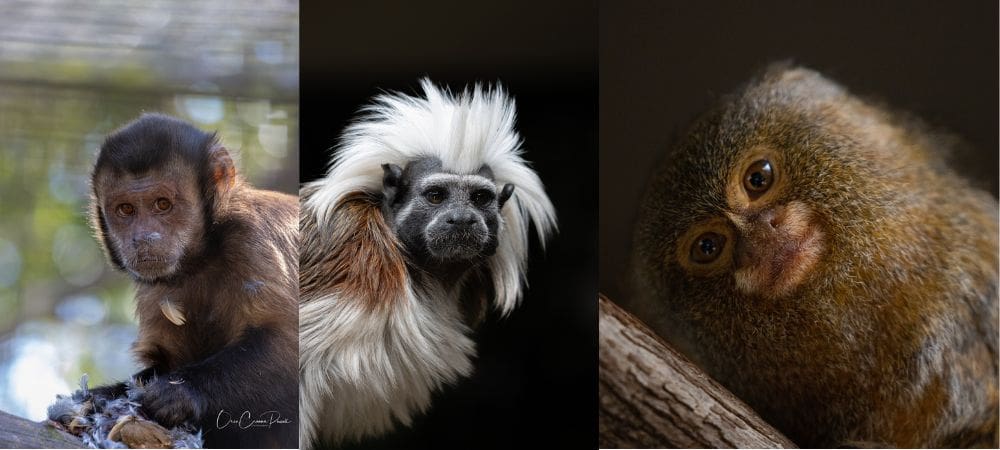International Primate Day: Natureland Wildlife Trust
Did you know that the group of animals (the order) called Primates has one of the largest number of species within it. More than 500 species belong to the order primate – including our gorgeous Lemurs, Capuchins, Cotton Top Tamarins and Marmoset monkeys which can all be found here at Natureland. Humans also belong in the order of primates too… That’s right, me and you!
Two thirds (that’s a lot!) of all primates can be found in only four countries: Brazil, Madagascar, Indonesia, and the Democratic Republic of the Congo (DRC). Almost all of these primates are endangered and at risk of extinction due to threats such as mass deforestation and the damaging pet trade. At Natureland it is our mission to aid in the conservation of these precious animals. Come say hi to our beautiful primates and learn all about their behaviors, what they need to thrive and how we as people can help ensure their survival.
Our pygmy Marmosets and Cotton Top Tamarins, perhaps the cutest little critters you ever did see, can be found here at Natureland. Although one of the tiniest primates, Marmosets can jump almost five meters! Try measuring that with chalk on the ground and see how far you can jump. You may be surprised, these primates are impressive! Marmoset and Cotton Top Tamarins’ cute factor is unfortunately one of the major reasons for their rapidly decreasing numbers in the wild. They are taken from the bush to be made as pets for people. In some places this is legal, in others it is not. You may have heard of them referred to as ‘finger monkeys’.
It is so important that we as people are educated about the damaging nature of the exotic animal pet trade.
Other primates we have here are ruffed lemurs, who happen to be the world’s largest pollinator. Cool huh. They use the fluffy ruff around their head to collect the pollen from plants and share it from one plant to another. Although lemurs are primates – they’re not monkeys. Lemurs are prosimians—a group of primates that also includes lorises, bushbabies and tarsiers. Most prosimians can be found in Madagascar, but some live on the mainland of Africa and Asia. Scientists believe they made it to Madagascar by floating over on bits of driftwood. Rather savvy if you ask me. Sadly only 10 percent of Madagascar’s forest remains – again there are still things that can be done about this. Where there are people that care, there’s hope. Check out this amazing organisation and what they are doing to reforest Madagascar and protect it’s precious animals: https://www.edenprojects.org/our-work/madagascar
Last but not least we have our wonderfully cheeky Capuchins. These primates are incredibly intelligent, which you’ll see if you’ve ever been lucky enough to make enrichment activities for them as part of our education programme. There’s no puzzle too tricky for them to solve. Just don’t smile at them using your teeth because unlike us humans, these monkeys see that as a threat. You’ll notice they raise their eyebrows up and down an awful lot, that’s because it’s their way of communicating. There’s many different ways to get one’s point across, and each living creature has its own unique way of communicating.
There are so many animals to celebrate here at Natureland, your admission and continued support towards us means we are able to continue doing the amazing conservation work we do! Educating about and helping protect the world’s incredible animals, both native and global, is why we do what we do. Education leads to caring, caring leads to conservation, conservation leads to thriving. Let’s all lend a helping hand.


This Post Has 0 Comments